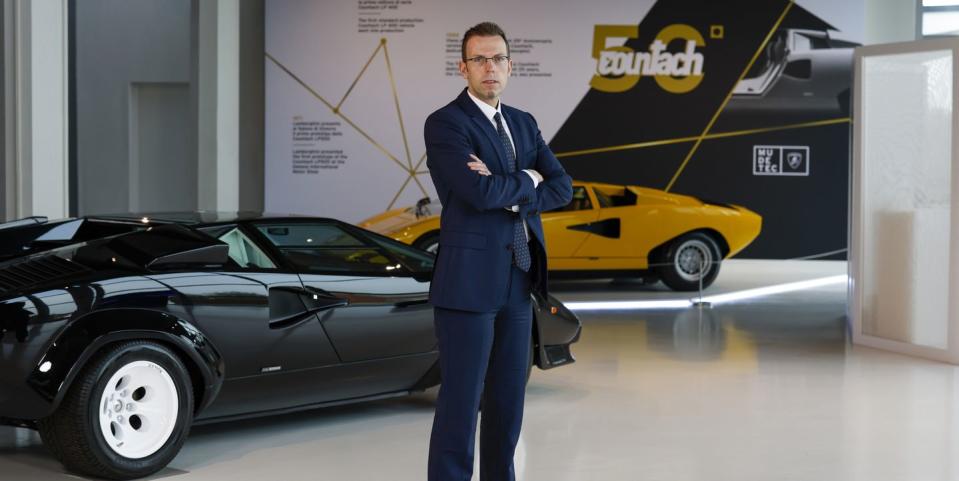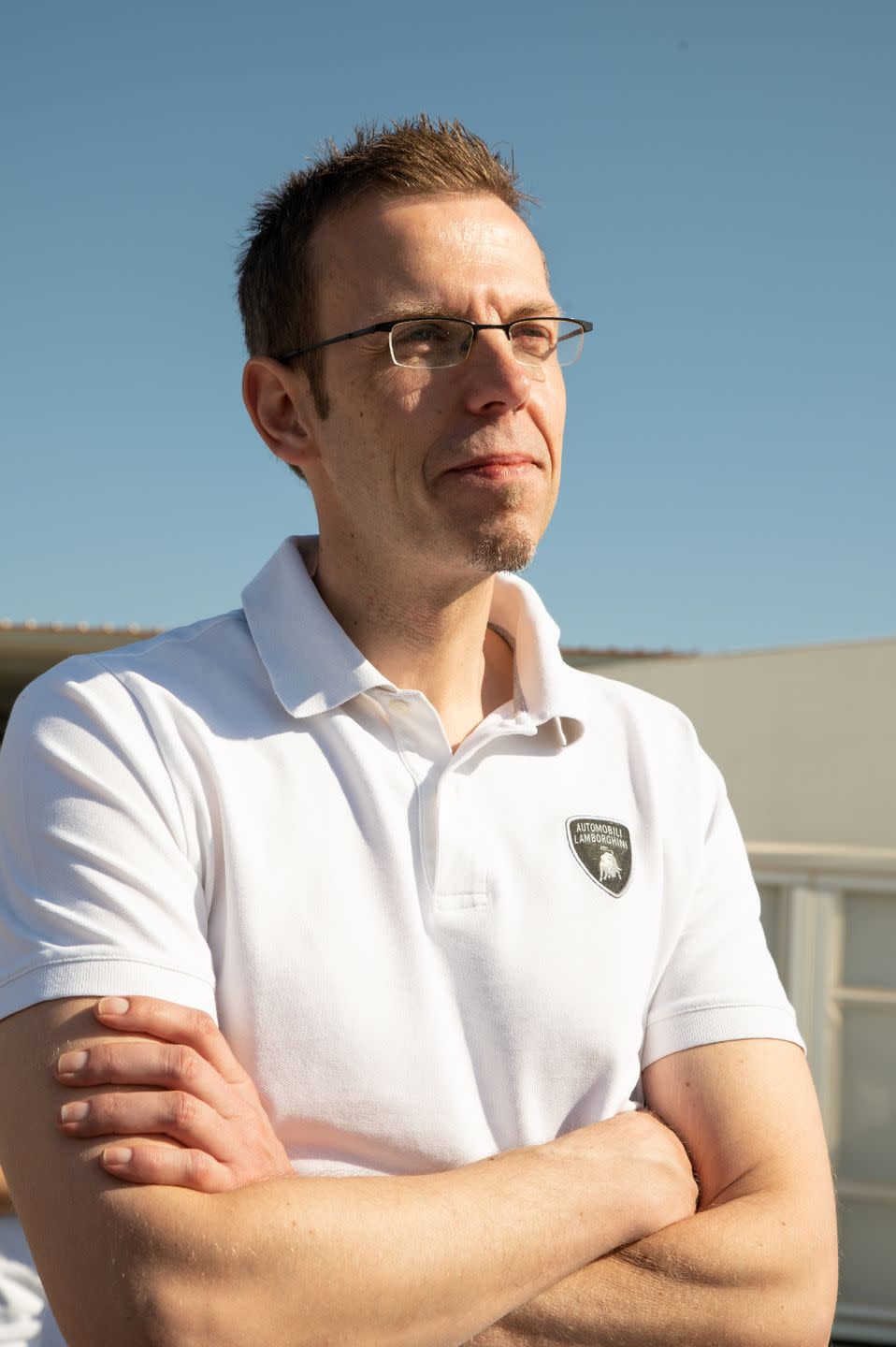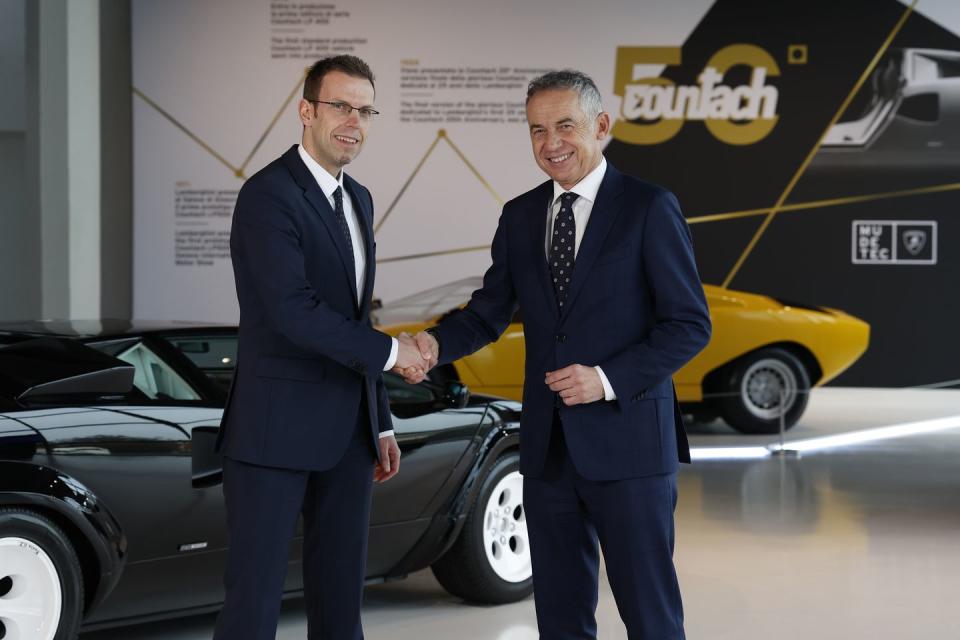Lamborghini ‘Definitely Won’t Play a Fake V10 Sound,’ New CTO Promises

Rouven Mohr's collection includes nearly a full set of Nissan GT-Rs, a Lotus Exige, a Renault Clio Williams, a Peugeot 205 Rallye, and a U406-generation Unimog.
His doctoral thesis had the snappy title Consistent Time Integration of Finite Elast-Plasto-Dynamics.
Work on Lambo’s first EV is slated for a projected launch in 2028, and Mohr admits the biggest challenge will be ensuring it delivers an appropriate level of excitement.
Senior automobile engineers often call themselves car guys, but very few of even the industry’s most famous names could boast a car collection as extensive and eclectic as that of Rouven Mohr.
Lamborghini’s recently appointed chief technical officer won’t say exactly how many cars he owns—possibly because of the difficulty of keeping count. But during a wide-ranging conversation about his automotive passions, the German admits to possessing nearly a full set of Nissan GT-Rs, a Lotus Exige, two of the most storied ‘90s European hot hatches in the form of a Renault Clio Williams and Peugeot 205 Rallye, plus a vast U406-generation Unimog.
“I think I am in love with lots of different cars, and lots of different styles of cars,” Mohr says. “I am not one of those one-make guys. The Japanese car scene really touched my heart when I started out in the drift scene. At that time in Germany, 90% of the guys who were drifting drove BMWs, but I was fascinated by the Japanese cars.”
While studying at college, and then working as a young engineer for Audi, Mohr became a keen amateur drifter, buying and tuning a Nissan 350Z with a modified limited-slip differential and revised suspension. “I was an amateur—it was never serious for me,” he says. “It was nothing like the sport is today—more having fun with friends.”
But he admits oversteer and tire smoke did play a part in his automotive education, giving him an appreciation of the differences of how cars react when pushed beyond the limit. “I would not say it is something that has huge relevance to building road cars,” he says, “because drifting has a very specific driving style. But it helps to build an understanding of how changing things influences the way the car reacts—and also how you can judge the car, especially the transition from neutral to oversteer or understeer.”

While stressing he never competed at a high level, Mohr does own a very serious drift car—a Toyota 2JZ-engine Infiniti G35 formally part of the pro Falken team in the UK—one he only drives once or twice a year. “That’s a completely modified car. It has a front axle kit so that you can have steering angles of up to 80 degrees. It really is a crazy car, not street legal—it’s loud as hell and you need a trailer and lots of tires.”
For an idea of how spectacular it is, have a look here. So yes, Mohr is a pretty serious driver.
He is something of an engineering wunderkind. His doctoral thesis had the snappy title Consistent Time Integration of Finite Elast-Plasto-Dynamics, and he has risen to the CTO role at the age of just 42. He previously worked under the man he replaced, Maurizio Reggiani, who did more than anybody else to transform Lamborghinis from crude boulevard cruisers to modern supercars. “Legend is the right word,” Mohr says about Reggiani. “For me it’s even more than that, I would say he was a mentor for me, always supporting me even when I was not at Lamborghini. The shoes I am filling are incredibly big.”
Work on the replacement for the long-lived Aventador and the smaller Huracan was largely complete by the time Mohr took up his new role. The Aventador’s successor will appear next year with a hybridized V12 engine, while the next Huracan is tipped to swap from V10 to a twin-turbocharged V8.

But Mohr will be leading the development of the more radical Lamborghinis that will follow, and which will take the company into a fully electric future. Work on Lambo’s first EV is already under way ahead of a projected launch in 2028, with Mohr admitting the biggest challenge will be ensuring it delivers an appropriate level of excitement without a loud, charismatic internal-combustion engine.
“The problem is that the acoustic characteristic of every electric motor is quite similar,” he says. “It’s not like the combustion world where you have huge differences—between a three-cylinder and a W16. So there are fewer possibilities.”
“Ask me how we will do this and I cannot answer 100%, because we are still working on it,” he continues. “We can analyze the frequencies that are available and look to eliminate some and enhance others. Then there are some vibrations, maybe imperfections in the transmission. Beyond that there are opportunities to sound-engineer the motors, but to develop what is already there rather than create an artificial one.”
Appropriately, given Lamborghini’s noisy heritage, Mohr admits he is opposed to creating SciFi-style electronic soundtracks being given to an increasing number of performance cars to try and add character and distinguish them from each other. “I am definitely not a fan of everything being artificial in terms of soundtrack. We definitely won’t do something like put 10 additional speakers into a car then play a fake V10 sound,” he says. “Well, maybe as an Easter egg, but not as the only choice.”
Even the loudest electric motors are still well short of the Wagnerian fury of a wrung-out V10 or V12, but Mohr promises Lamborghini will never lose its character even as the form of propulsion changes. “The engineers of every era have found a solution. That’s what we do—that’s our job,” he says. “The car has to speak to you—a Lamborghini always has to be authentic when it speaks to its driver.”
We can’t disagree with that.
If you met Lamborghini's new CTO, what would you say to him? Please comment below.

 Yahoo Autos
Yahoo Autos 